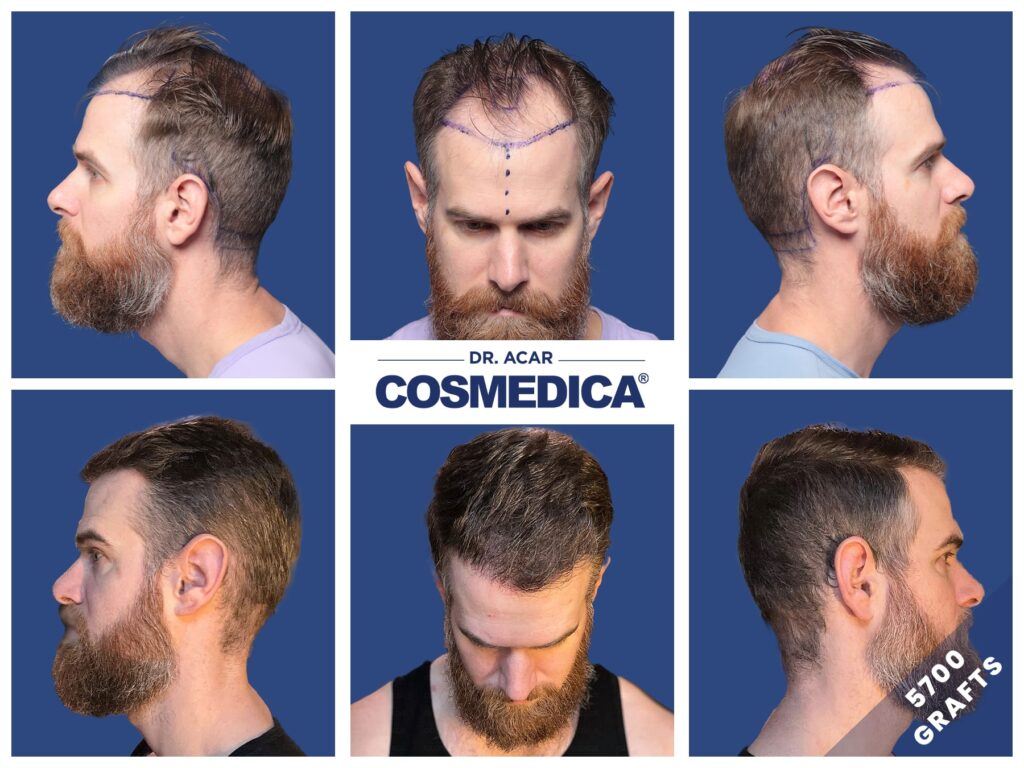Hair loss is a universal issue that affects both men and women all over the world. The most popular treatment for hair loss is a hair transplant. Even though scientific evidence supports the procedure, there’s also a lot of confusion surrounding it. The most common question surgeons face is- Do hair transplants work?
The short answer will be yes; they can absolutely work. They are designed to be a permanent solution for people experiencing hair loss. However, hair transplants will work, as will the care you provide for them. So, in this article, let’s look at whether hair transplants work, the science behind them, and how to make them effective for a lifetime.
Are Hair Transplants Effective?
Hair transplants are a long-lasting solution for healthy hair. Male pattern baldness, known as androgenic alopecia, is very serious. In this condition, the hair follicles are sensitive to the hormone dihydrotestosterone (DHT). Therefore, hair follicles shrink, resulting in hair loss. In this case, hair transplant surgeries are very effective.
A well-executed hair transplant can retain almost 90% of the original transplanted hair. Hair transplant work can be very effective if you opt for an experienced surgeon and adhere to their post-operative instructions.
What Is a Hair Transplant?
A hair transplant is a surgical procedure that provides a more natural hairline with a thicker density. In the simplest terms, it moves hair follicles from one part of the scalp to another. Your scalp’s harvested area is called the donor site, and the transplantation area is called the recipient site.
It may sound like a simple procedure, however, it requires expertise, precision, and understanding of each person’s unique hair growth patterns. Otherwise, the results may end up looking unnatural.
What are the Different Types of Hair Transplant Procedures?

Let’s look at the different types of hair transplant procedures and how they work in more detail:
Follicular Unit Transplantation (FUT)
FUT or Follicular Unit Transplantation is also known as strip surgery. It is an older method. The surgeon usually removes a strip of skin containing hair follicles from the donor area. Then, they dissect the strip into smaller grafts. The surgeon transplants the smaller strips into the recipient area.
While it can cover a large area of baldness, it leaves a linear scar in the donor area. If you have a shorter haircut, the scar may be visible. There is also a longer recovery time associated with this procedure.
Follicular Unit Extraction (FUE)
FUE is the most widely performed and modern hair transplant technique today. It involves extracting individual hair follicles from the donor area (typically the back or sides of the scalp) and transplanting them into areas of thinning or baldness.
FUE hair transplantations are more of a modern procedure than FUT. The surgeon uses a micro punch tool to remove each hair follicle instead of removing a strip. The extracted follicles are then implanted into the recipient area through small incisions. As the procedure uses an individual extraction method, it is generally non-invasive and less painful. It also doesn’t leave a linear scar.
Furthermore, Dr. Acar has developed the advanced Sapphire FUE hair transplant method. In this variation of the classic FUE hair transplant, the surgeon uses Sapphire blades, instead of steel blades for the incision during the hair transplant process. These blades are incredibly precise, with a V-shaped design, allowing for smaller and more refined incisions, which is crucial for the successful transplantation of hair follicles.
Direct Hair Implantation (DHI) Sapphire Method
The Micro Sapphire DHI technique, innovated by Dr. Acar, represents a groundbreaking advancement in hair transplantation. Similar to the Sapphire FUE method, this technique involves harvesting hair follicles individually from the donor area utilizing advanced micromotors.
Subsequently, a microblade made of sapphire is used to create hair canals with unparalleled accuracy and precision, surpassing the capabilities of traditional steel instruments.
The harvested grafts are then meticulously implanted into the recipient area with the aid of a specialized DHI implanter pen. This advanced tool ensures optimal protection for the delicate hair grafts.
Equipped with unique sapphire blades designed for smaller incisions, the pen facilitates faster healing and minimizes scarring.
The is is the kind of hair transplant that works the best. It is only available under Dr. Levent Acar at the Cosmedica clinic in Istanbul, Turkey. You can look at the before and after results of a hair transplant in Turkey at Cosmedica Clinic for the effective results of the DHI Sapphire method.
What Is the Success Rate of Hair Transplants?

In general, the success rates for hair transplants lie anywhere from 75% to 95%. But do hair transplants work? In short, Yes, they can. However, a hair transplant’s success rate depends on four things:
- The expertise of the surgeon
- The procedure used
- The severity of hair loss
- Lastly, how well you take care of the hair post-surgery
Hair Care Alternatives: Are There Other Options?
Other than hair transplants, there are other non-surgical options for hair loss that can work. You can explore these options beforehand as an alternative. Let’s look at some of the common options:
Medications
Minoxidil is an over-the-counter medication. It is very effective in stimulating hair growth on your scalp. However, it can not slow down your hair loss. Finasteride can also be effective for the early stages of hair loss. However, it is generally not recommended for women of childbearing age. The main issue with both of these medications is that they are not very effective if you lose your hair due to a medical condition.
PRP (Platelet-Rich Plasma) Therapy
In PRP therapy, a technician draws and injects blood into your scalp. The platelets in your blood can stimulate hair growth and strengthen existing hair.
Laser Therapy
Low-level laser therapy (LLLT) can stimulate hair follicles and promote new hair growth. However, it is not effective for everyone.
These alternatives can provide great results. However, these are usually not permanent. For example, you will lose the new hair growth after stopping minoxidil. PRP, on the other hand, requires continuous adherence to see the effects. A hair transplant in Turkey can be a one-and-done solution for your hair loss, with permanent lifelong results.
Choosing a Skilled Professional is Crucial
You need to research well and choose your surgeon carefully. The surgeon’s skill is crucial for having long-term results with your hair transplants. For hair transplant to work, surgeons need to have extensive knowledge about the anatomy of the scalp, hair growth patterns, and the latest technologies.
Dr. Levent Acar is one of the leading experts in hair transplantation. He specializes in the DHI Sapphire method, which offers a high success rate of 98% due to its precision and advanced tools. It’s also important to follow your surgeon’s instructions after the surgery. If you don’t care for your transplanted hair, it will not sustain for long.
